Open Electricity Dispatch — September 2025

Each month, we round up the most interesting shifts in the grid – new records, infrastructure updates, and other signals of change in Australia’s electricity system.
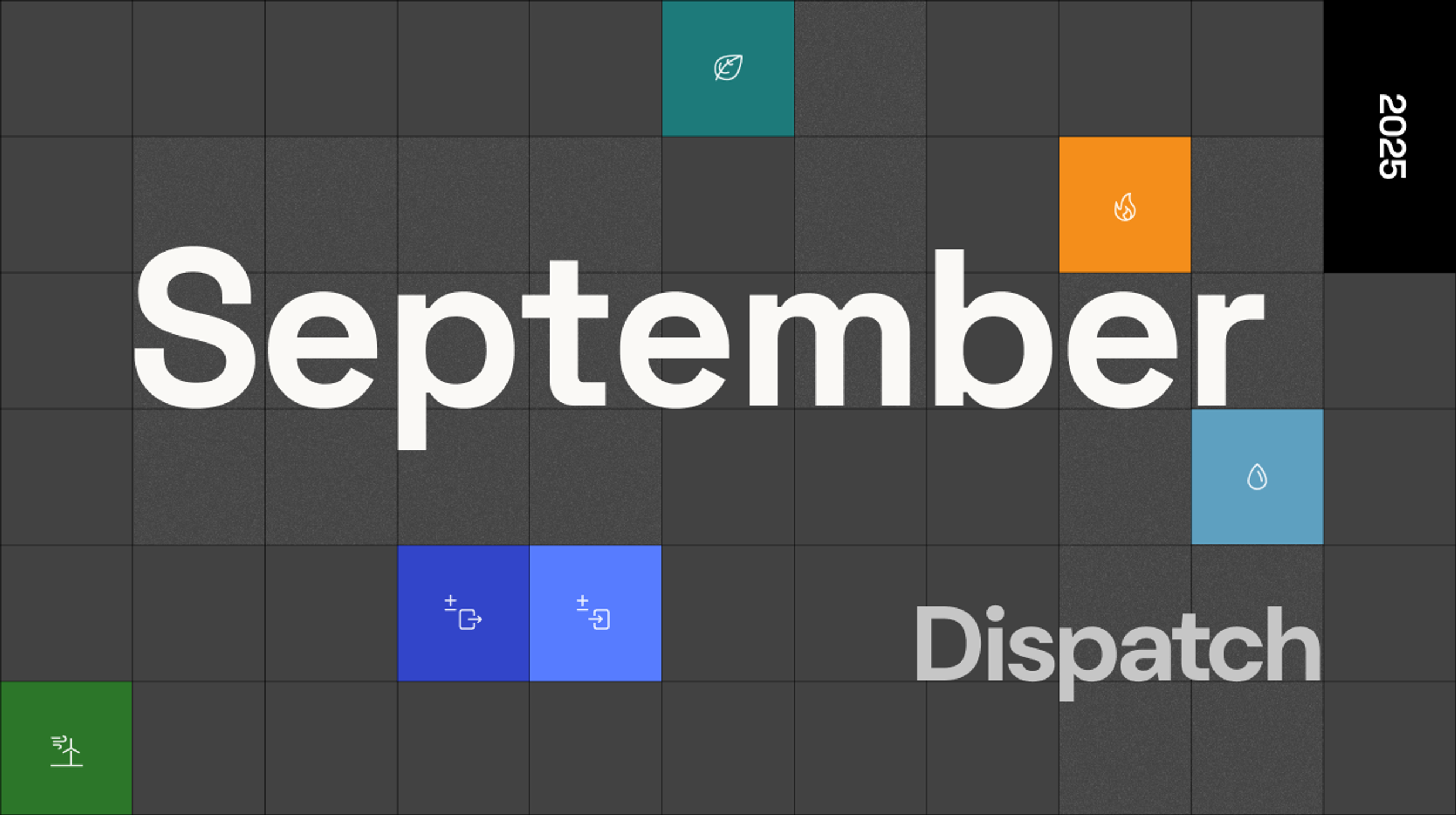
What caught our eye this month:
🌱 Renewables up, coal down in VIC
🔥 Gas hits monthly low in QLD
📈 QLD surpasses its yearly wind record
⚡ VIC passes the gigawatt threshold
🏗️ 10-hour battery begins construction
While spring often records lower absolute renewable generation than the summer that follows, the lower need for cooling or heating combined with better conditions for renewables generation usually ensures spring has the highest renewable proportion of the year. Consumption falls quickly between August to September – averaging 8% in recent years – making that month the second-lowest consumption month of the last two years behind April.
Lower absolute renewable generation also tends to result in fewer generation records - but this September bucked the trend, with strong growth driven largely by new or recently commissioned projects. We saw 10% growth year-on-year across the NEM this September. With the sunnier months still ahead of us, there’s plenty of room for growth, and we’re expecting a record-filled Q4.
There were 20 records broken in August. View them all.
Here’s your monthly dispatch from Open Electricity:
Notable Records:
1. Highest monthly renewable generation, and lowest monthly coal generation in Victoria
Victoria set a new state record for monthly renewable generation in September, recording a total of 2,326GWh – 10% higher than the previous high of 2,113GWh set in February 2025. It’s uncommon for Victoria to see such strong generation this time of year, and this is the first time the record has been held in September since 2002, when the state’s only renewable generation came from hydro.
Both solar and wind generation were strong, with growth of 24% and 21% year-on-year respectively. The largest contributor was the Golden Plains Wind Farm, which contributed just 37MWh in September 2024 and 209,732MWh in September 2025 – more than any Australian wind farm has previously generated in a month. This gives a capacity factor of over 38% for the month. This is a particularly impressive performance from Golden Plains Unit 3 considering it’s still commissioning.
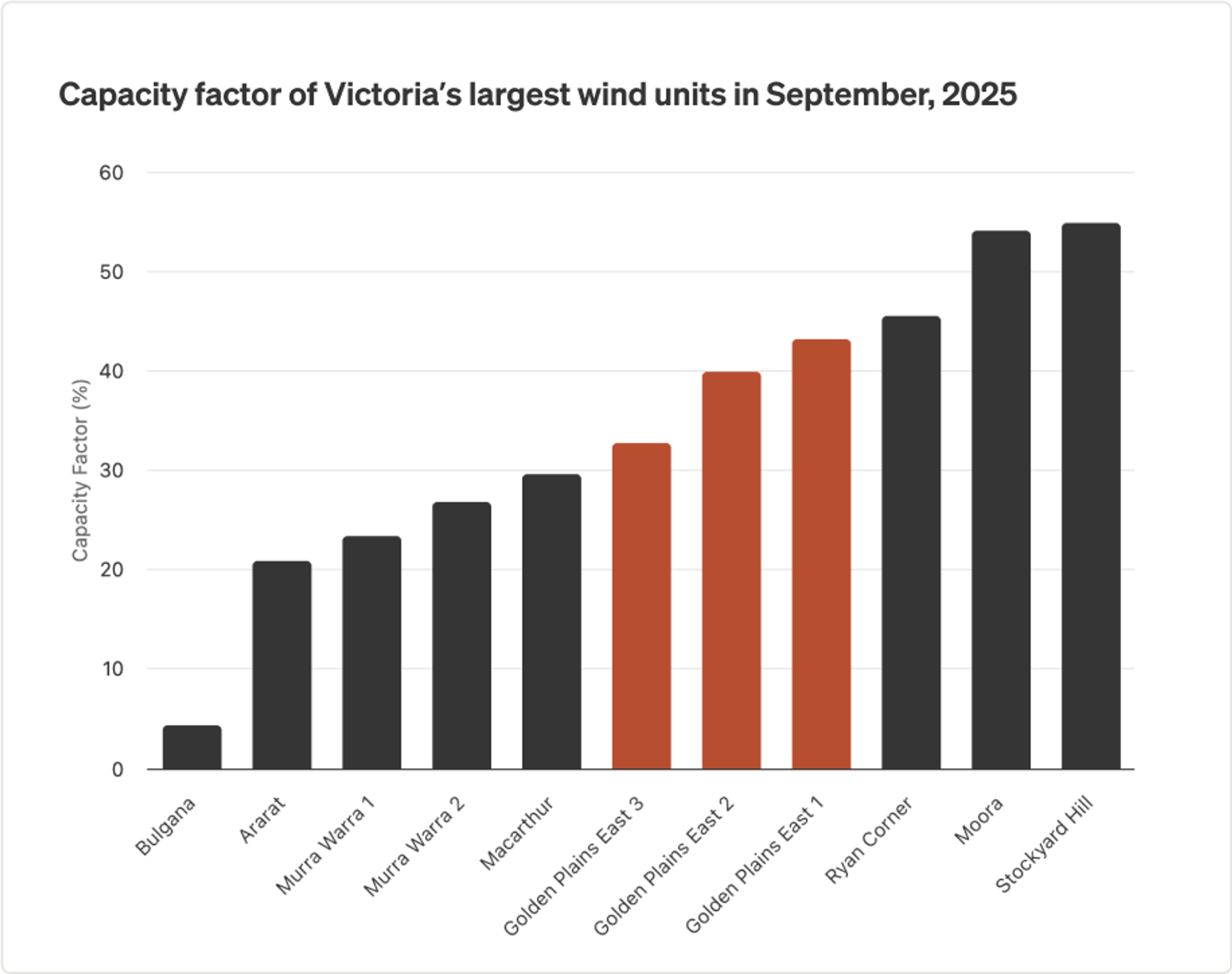
Meanwhile, coal generation in Victoria totalled just 1977GWh for the month, nearly 8% below the previous low in October 2024.
This decline comes largely as a result of outages – particularly at Yallourn, which we know from Watt Clarity had only one unit operating from the 8th to 17th. The facility’s four units on average only operated a little over 43% of the time. You may remember Yallourn faced an unexpected outage in June earlier this year, prompting high gas usage. This month the facility generated 24% less than that June low. By contrast, Loy Yang A and B rate at over 80% for the month.
Loy Yang A and Loy Yang B had far higher utilisation, at 86% and 81% respectively.
This absence, combined with low coal usage elsewhere and a thirty-day month has resulted in the lowest coal generation seen in the entire NEM over a month, previously in October 2024. This marks the first month in which we have seen more renewable generation than coal generation across the NEM.
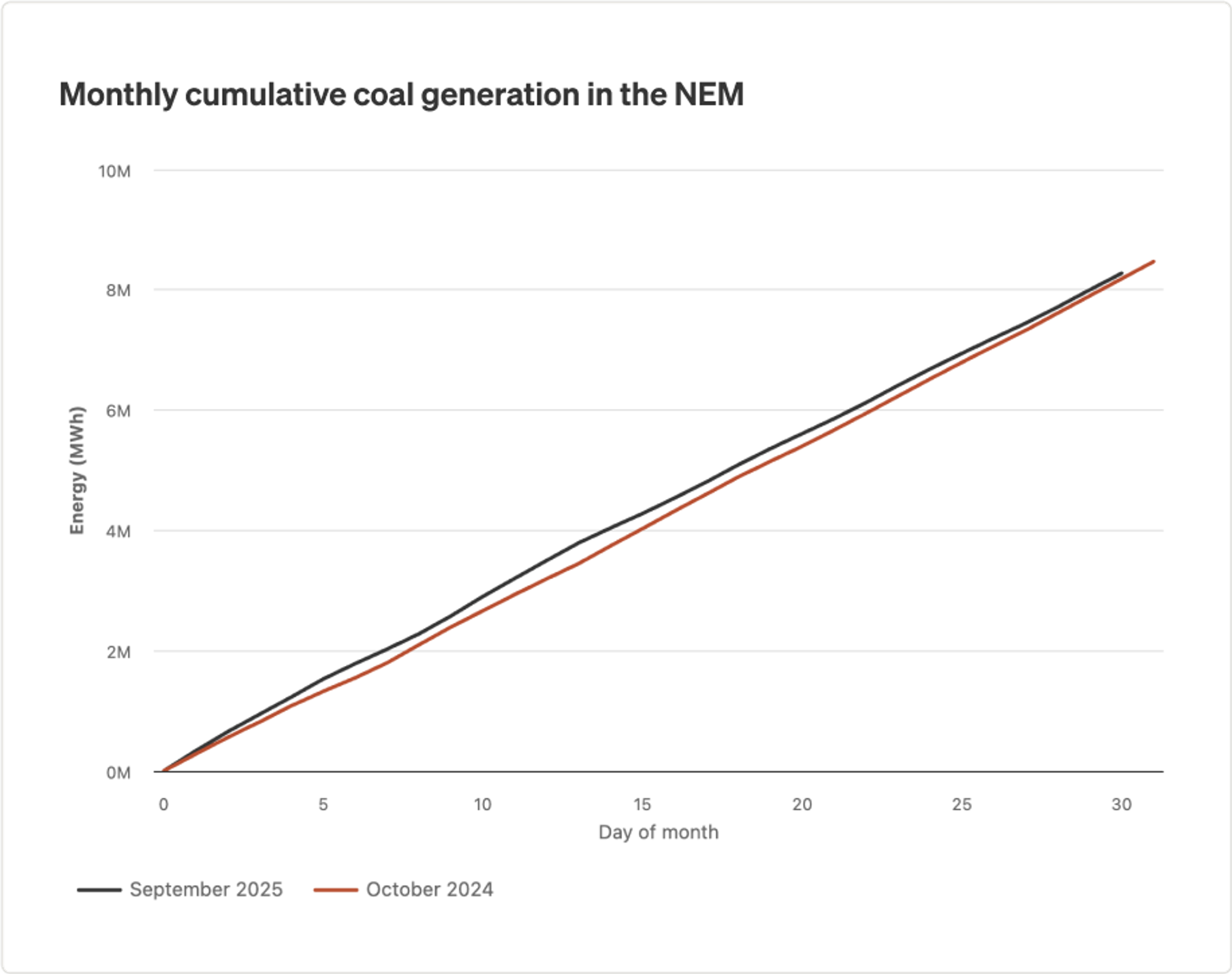
2. Lowest monthly gas generation in Queensland (in almost two decades)
Gas generation in Queensland fell to 227GWh in September, the lowest monthly total in nearly two decades. Queensland has the highest gas generation in the NEM in absolute terms and sees far more consistent generation from its gas generators both throughout the year and intra-day compared with other states with coal generators.
Queensland hosts over half of the NEM’s closed-cycle gas capacity – a more efficient gas turbine that allows for sustained usage. Unlike Victoria and NSW, where gas units sometimes shut down entirely during the day and turn on for the evening peak, Queensland gas facilities are active throughout the day.
Analysis of hourly generation data shows that nearly all of the decline in Queensland’s gas generation occurred during the evening peak – a strong signal that other technologies are beginning to displace gas at critical times.
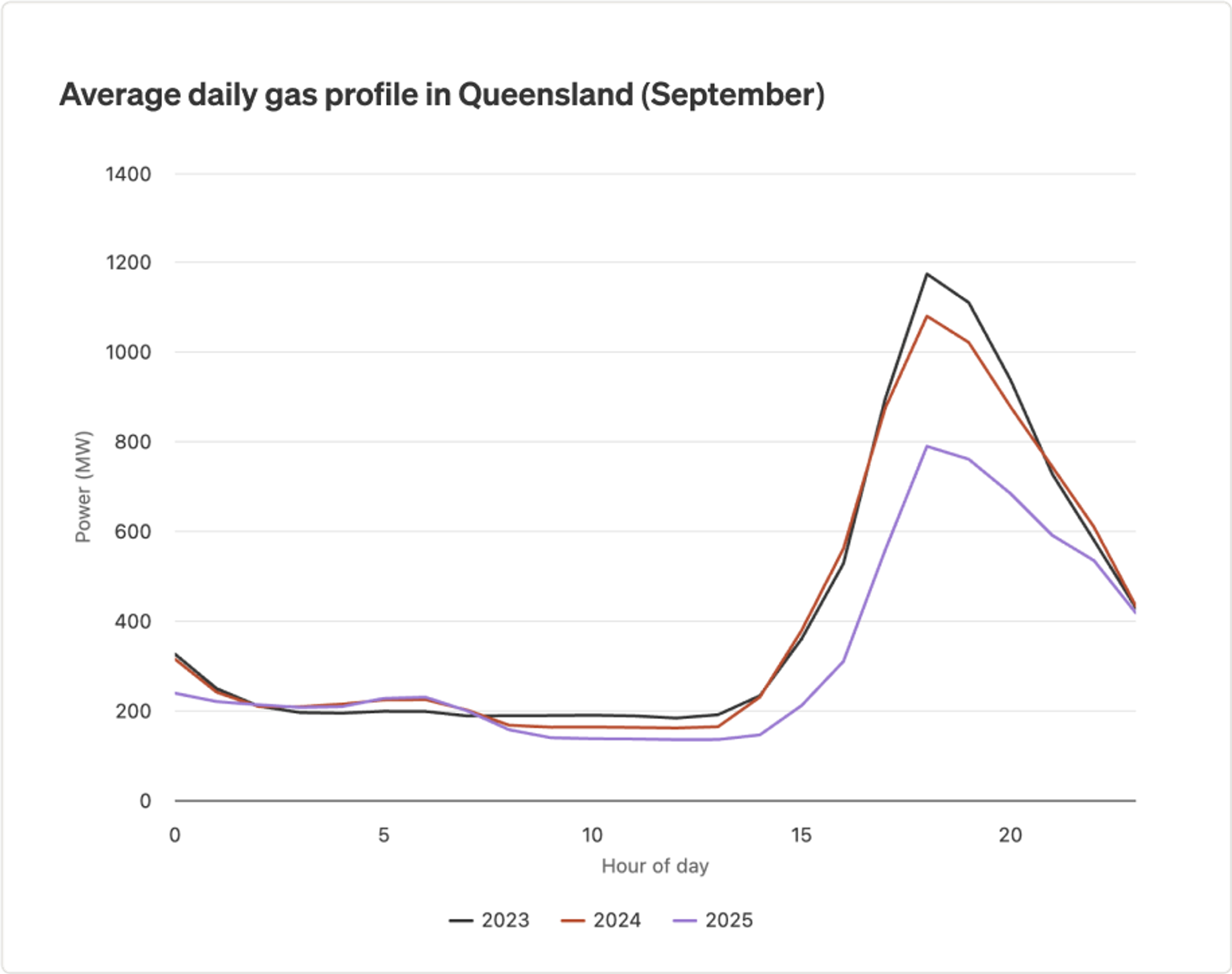
This shift is being driven by the state’s expanding battery fleet and a changing hydro profile.
While no new hydro has been added in recent years – the Kidston pumped hydro project remains under construction – existing assets are being utilised differently. Notably, Wivenhoe, a pumped hydro facility, is pumping more during the day, allowing for greater evening generation. This shift enables hydro to complement batteries in displacing gas during the evening peak. This September, we saw greater use of the Queensland pumps than ever before.
Geoff Eldridge has previously written on the changing role of hydro in the NEM, from baseload supply to a more dynamic, price-driven player in the generation mix.
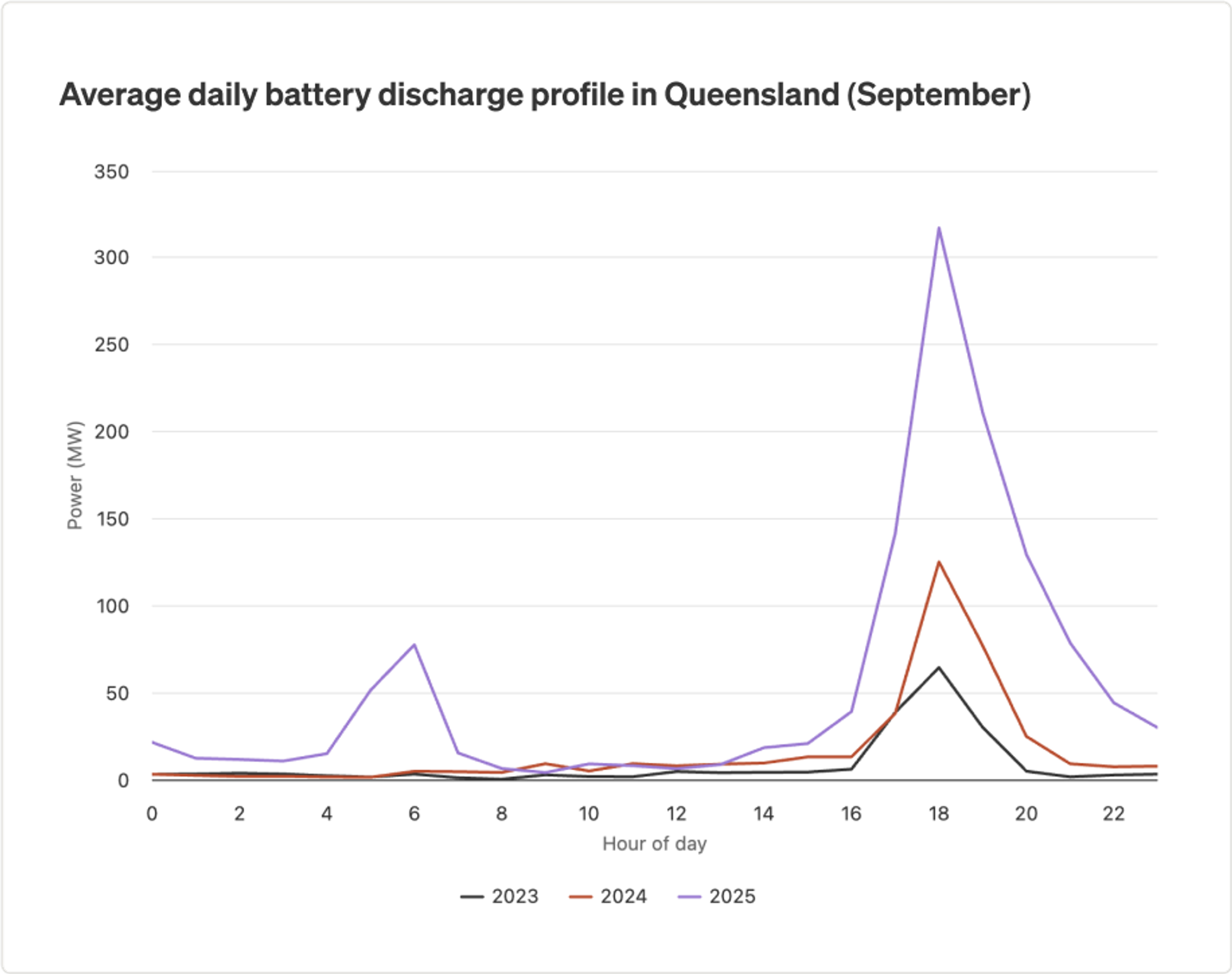
3. Highest instantaneous battery charge in Victoria
Victoria saw its highest instantaneous charging record – 1049MW – at 1:45PM on 23 September. Prior to this month, the record stood at 744MW, recorded on 20 June, and makes Victoria the first state to cross the gigawatt threshold for battery charging.
The new record was set with help from the Melbourne Renewable Energy Hub (MREH), which we covered in our August Dispatch. We have since seen the final unit of Side A commence this month and the site is already having an influence. September’s record was recorded with the first unit charging at its 200MW maximum capacity.
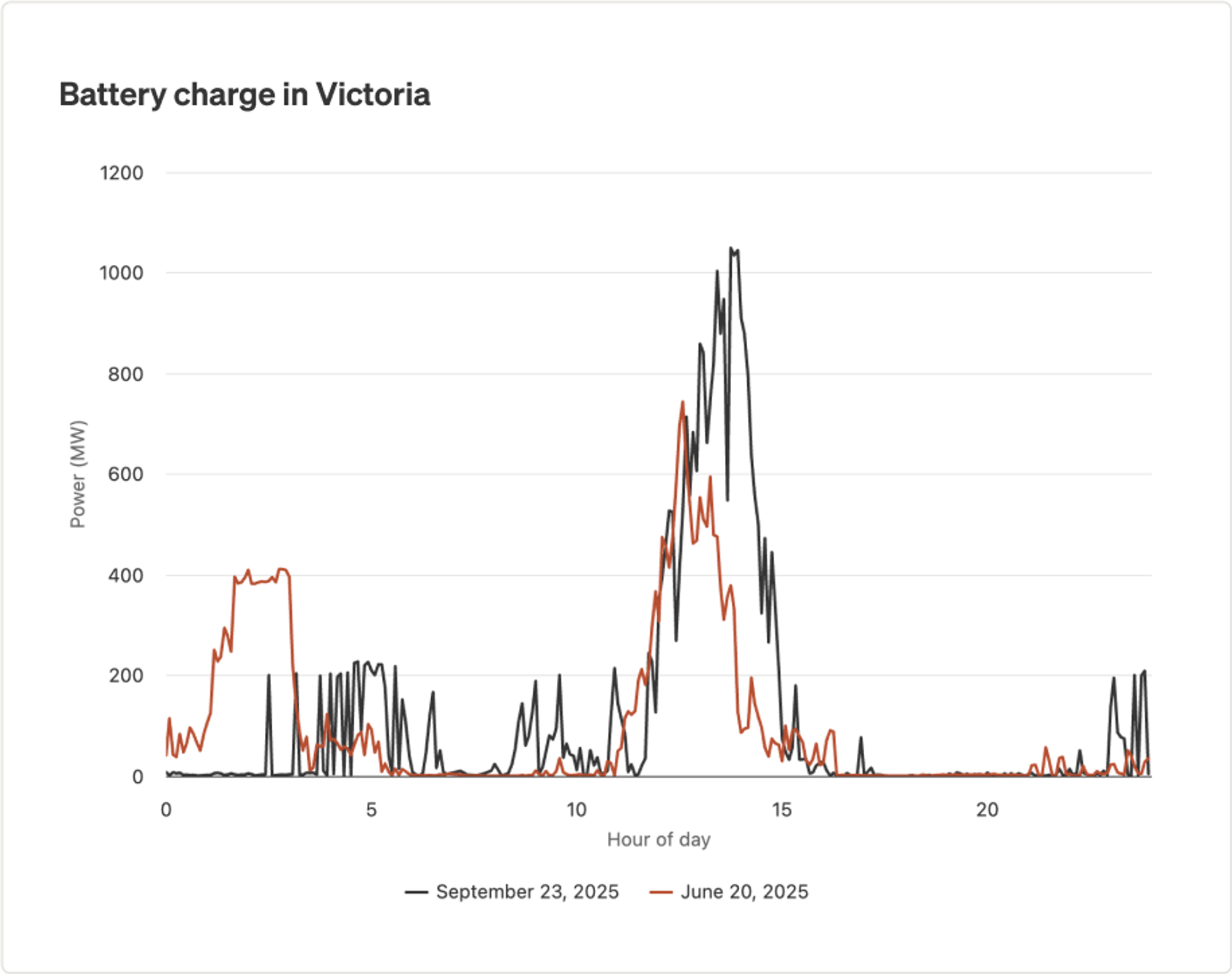
The Victorian battery discharge record was broken just two days later with 988MW, the first unit at MREH once again contributing significantly.
4. Queensland passes its annual wind generation record
While Queensland has the lowest wind generation as a percentage of generation, the state has seen three new large wind farms commence in the last 12 months: Macintyre and Clarke Creek in October 2024, and Wambo in June 2025. These are now the first, second and fourth largest wind farms in the state. Once stage 2 of Wambo is complete, it will overtake Cooper’s Gap to become the third largest.
Together, these projects represent over 60% of Queensland’s registered wind capacity. While they are not yet fully commissioned, they have already delivered a dramatic increase in cumulative wind output in the state. On 16 September, Queensland surpassed its yearly wind generation record, overcoming the 2024 total of 2,877GWh.
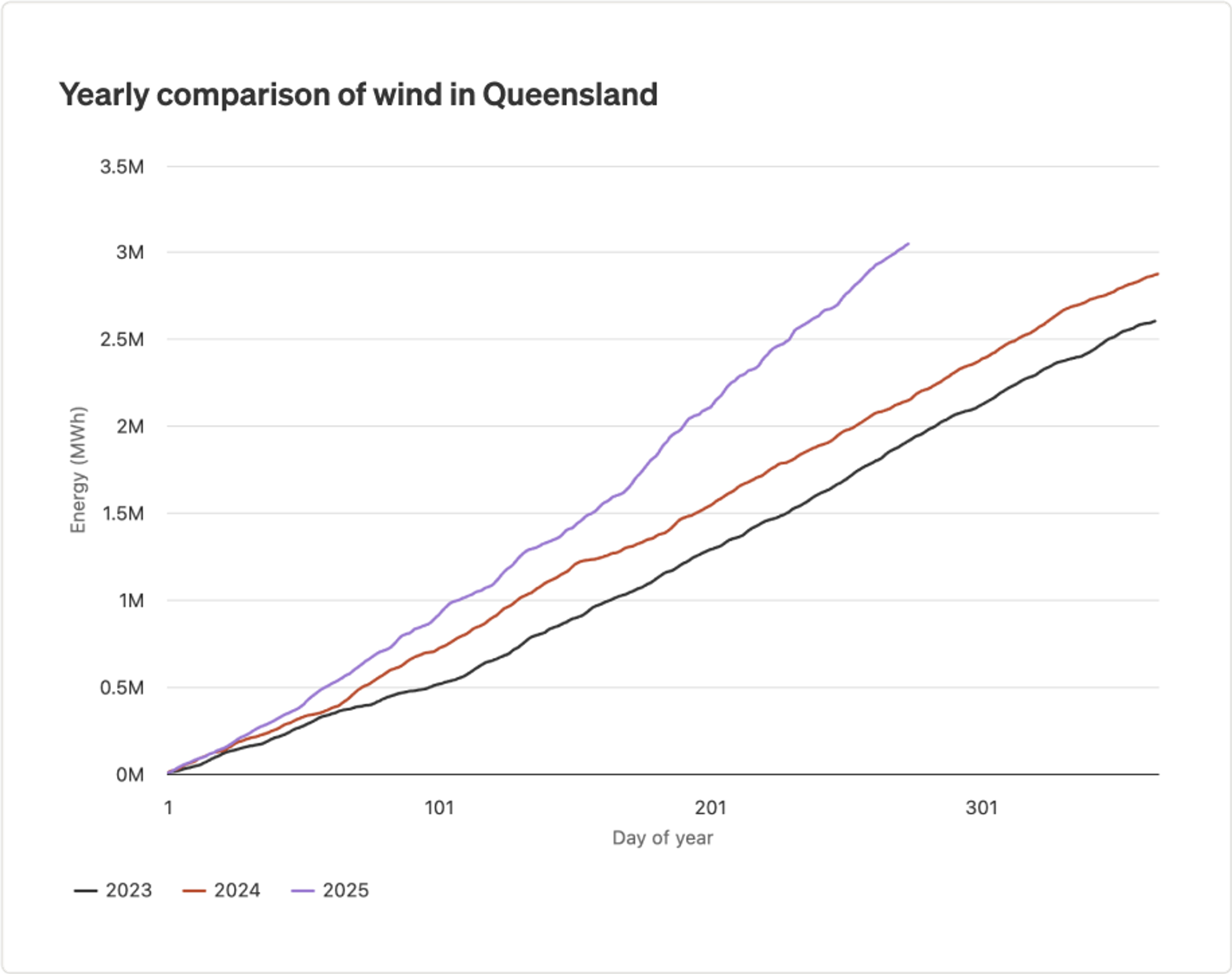
All mainland NEM states have recorded higher wind generation than this time last year, but Queensland is the first state to exceed its full-year record.
Facilities Update
Goulburn River battery begins construction
Lightsource BP has commenced construction on a 10-hour battery in New South Wales. The Goulburn River Solar Farm began construction in late 2024 and is expected to come online next year. Once complete, it will likely be the largest solar farm in the state.
The co-located 49MW/562MWh battery will be DC-connected to the solar farm – much like the existing Cunderdin Solar Farm or under construction Maryvale Solar Farm. This is the longest duration battery currently under construction, overtaking the 8-hour Limondale BESS.
Three new batteries commence operation
Three new batteries have begun generation: two in Queensland, and one in NSW:
- The second stage of the Western Downs BESS commenced on 8 September, adding an additional 255MW/510MWh to the grid. Despite only completing commissioning in June, Stage 1 has already discharged the second most electricity of any battery in the NEM so far this year.
- The Brendale battery (205MW/410MWh), located in outer Brisbane, followed soon after. This is the third battery developed by Akaysha Energy, following the Waratah Super Battery (September 2024) and Ulinda BESS (June 2025), with more in the pipeline.
- In NSW, Smithfield BESS is the newest addition to the grid, with 65MW/130MWh of capacity. The battery is co-located with developer Iberdrola’s existing Smithfield open cycle gas peaker.
___
See all 20 records and the latest facilities updates at Open Electricity.
If you’ve subscribed to OpenNEM or Open Electricity email updates in the past, we highly recommend signing up again (in footer). We’re rebuilding our list from scratch, and we don’t want you to miss out.

